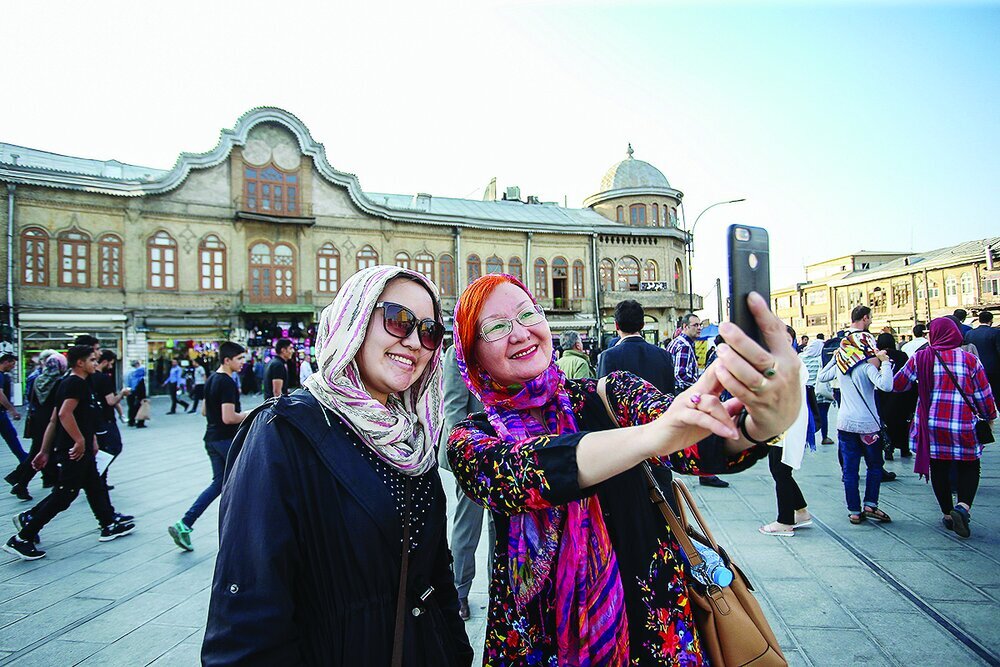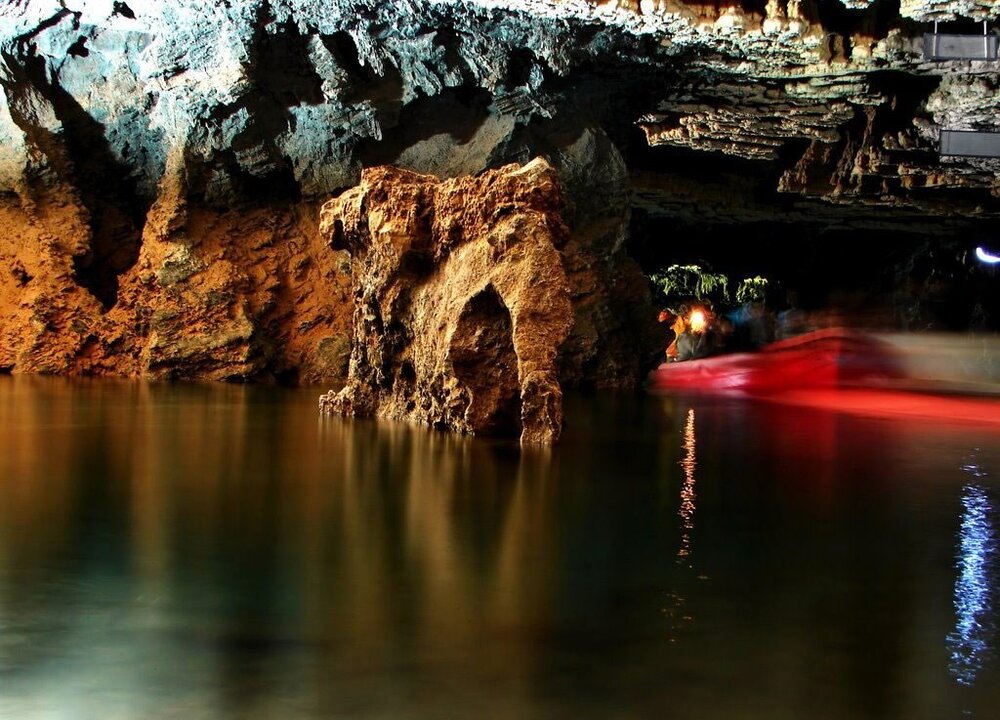Hamedan where nature meets culture

TEHRAN - Hamedan never falls short of offering exciting ideas to its visitors. Astonishing archaeological sites, scenic nature, tranquil gardens, vaulted domed bazaars, and more importantly its hospitable people are amongst the highlights of the Iranian city.
Known in classical times as Ecbatana, Hamedan was once one of the world’s greatest cities of ancient times. Pitifully little remains from antiquity, but significant parts of the city center are given over to excavations, and there’s a scattering of historical curiosities.
Sprawling on a high plain, mountainous Hamedan is graciously cool in August but snow prone and freezing from December to March. In summer the air is often hazy, but on a rare, clear spring day there are impressive glimpses of snow-capped Alvand Kuh (3580m), sitting aloof above the ragged neocolonial cupolas of Imam Khomeini Sq.
The archaeological site of Tepe Hegmataneh, which corresponds with the ancient city of Ecbatana, has a circumference of 1.4 kilometers with an area of about 40 hectares. Ecbatana was, in fact, a city on the site of which stands the modern city of Hamedan. The view of distant mountains from the archaeological hill is pleasantly rewarding, especially in the late afternoon, however, what lies below is an ancient Median and Achaemenid city. Small sections have been excavated over the last century, most extensively in the 1990s. There’s a smart museum nearby, as well as two Armenian churches, now part of Hamadan University.
Ecbatana was first excavated in 1913 by the French Assyriologist Charles Fossey. Excavations have been limited due to the modern town covering most of the ancient sites. In 2006, excavations in a limited area of Hagmataneh Hill failed to discover anything older than the Parthian period (247 BC – 224 CE), but this does not rule out older archaeological layers existing elsewhere within the vast site.
For history buffs and culture lovers, Ganjnameh is a can’t-miss destination while in Hamedan. Meaning “Treasure Epistle”, Ganjnameh features sets of cuneiform inscriptions written in three languages of ancient Persian, Elamite, and Babylonian. Dating back to the age of Achaemenid Kings Darius I (521-485 BC) and Xerxes I (485-65 BC), the inscriptions were first studied in detail by the French painter and archaeologist Eugene Flandin, who was accompanied by Pascal Coste.
The right inscription, belonging to Xerxes I, reads: “The Great God [is] Ahuramazda, greatest of all the gods, who created the earth and the sky and the people; who made Xerxes king, and outstanding king as an outstanding ruler among innumerable rulers; I [am] the great king Xerxes, king of kings, king of lands with numerous inhabitants, king of this vast kingdom with far-away territories, son of the Achaemenid monarch Darius.”
An adjacent 9-meter-high waterfall becomes a popular ice-climbing spot in wintertime. In contrast, the Alvand summit can be reached as a day trip in summer. The relaxed ambiance of the site, which is located just a short drive from the city, also opens up an opportunity for hiking on the side of Mount Alvand.
The 12th-century Gonbad-e Alavian (“Alavian Dome”) is a prime example of the Persian-Islamic architecture of the time. Its brick tower remains famous for the whirling floral stucco added in the Ilkhanid Mongol era; this ornamentation is described by British travel writer Robert Byron in his travelogue “The Road to Oxiana”.
In its small cellar, there are tombs of two elders of the Alavian family. The interior area is formed of six rooms with arches. Cube-shaved graves covered with turquoise bricks are in the center. A rectangular plaque with stucco honeycomb patterns and flower motifs is hung above the entrance of the structure. The outer frame of this plaque bears stucco reliefs of Quranic inscriptions in the Kufic calligraphy hand.
Masjed-e Jameh (The Friday Mosque of Hamedan) is one of the oldest in Hamedan. The mosque is rectangular, and formerly had four porches of which three have remained. This structure comprises two areas for nocturnal prayers, a brick dome, and a large and pleasant courtyard with a huge pool in the center. The disused south iwan (entrance) leads into a hall over which there’s an impressively large brick dome. The north iwan is lavished with patterned blue tile work that continues on four of the mosque’s six minarets. Some areas are restricted to men only. The monument is located near Imam Khomeini Sq. and to the west of Ekbatan Avenue. A vaulted passage of a historical bazaar leads into the courtyard of the large Qajar-era mosque.

The iconic Bu-Ali Sina (Avicenna) Mausoleum dominates his namesake square and resembles a concrete crayon pointing to the heavens. It was loosely modeled on Qabus’ 1000-year-old tower in Gonbad-e Kavus, which is a UNESCO World Heritage. There is a single-room museum of Avicenna memorabilia, his tombstone, a small library, and a display of medicinal herbs. Avicenna (born 980, near Bukhara, Iran [now in Uzbekistan]—died 1037, Hamadan, Iran), was a Muslim physician, the most famous and influential of the philosopher-scientists of the medieval Islamic world. He was particularly noted for his contributions in the fields of Aristotelian philosophy and medicine. He composed the Kitab al-Shifa (Book of the Cure), a vast philosophical and scientific encyclopedia, and Al-Qanun fi al-Tibb (The Canon of Medicine), which is among the most famous books in the history of medicine.
Some 70 km northwest of Hamedan, is situated the entrance to the amazing Ali Sadr Cave, a gigantic water-filled cavern wieldy believed to date from the Jurassic era. The cave embraces a huge matrix of sunless channels, ponds, grottoes, and water passages which are stretched along with imposing rock formations and stalactite-covered tops in a span of several kilometers. Sightseeing there is connected with traversing in well-lit labyrinths of waterways via paddle boats, walking on subterranean islets, as well as observing rock carvings of hunting scenes, artifacts, paintings, and vessels that are associated with prehistorical troglodytes.
Traversing darkened Jurassic caverns by boat and walking across subterranean islands may be an unmatched visit to nature.
AFM
